SetonixSynth Solar Gravity Handleiding
SetonixSynth
Niet gecategoriseerd
Solar Gravity
Bekijk gratis de handleiding van SetonixSynth Solar Gravity (3 pagina’s), behorend tot de categorie Niet gecategoriseerd. Deze gids werd als nuttig beoordeeld door 6 mensen en kreeg gemiddeld 3.5 sterren uit 3.5 reviews. Heb je een vraag over SetonixSynth Solar Gravity of wil je andere gebruikers van dit product iets vragen? Stel een vraag
Pagina 1/3

Solar Gravity Vactrol Response VCA User’s Manual - Eurorack
Copyright 2023 SetonixSynth & Tidbit Audio. All rights reserved.

Hello and thank you for using the Solar Gravity Vactrol Response VCA for Eurorack. We hope you will
find its sounds most pleasing!
The Solar Gravity is an analog vactrol-based VCA designed to bring the lovely response of optocouplers
into the realm of clean, performance-based Eurorack VCAs. Starting with this simple concept, the Solar
Gravity utilizes some neat active circuitry to significantly reduce the bleed inherent in vactrol-based VCAs
and to provide the user with lots of control over the level, direction, and response of incoming control
voltage.
Though it’s primarily designed for use with audio signals, the Solar Gravity can also be used to control the
level of CV such as envelopes or stepped voltages with a unique vactrol response through its DC-coupled
input.
Technical Specifications (Eurorack standard)
Width: 4hp
Depth: 28mm
Peak Current Draw: 16mA @ +12V, 18mA @ -12V
Input Impedance (All Inputs): 100kΩ
Output Impedance: 1kΩ
AC Input Cutoff Frequency (-3dB High Pass): 5 Hz approx.
1. Connecting your Solar Gravity
Connect a 10-to-16 pin ribbon power cable to the header at the top of the Solar Gravity pcb. The -12V/red
stripe side of the connector must be aligned with white stripe silkscreen indicator labeled “-12V” for proper
use. This module is reverse diode protected, but it is still not recommended that you plug it in backwards
to see what happens.
2. Theory of Operation
The Solar Gravity is an active adaptation of the Tidbit Audio Vactrol VCA. It uses the same vactrol as
found in the Tidbit, but uses op-amps to provide various CV processing options and simultaneous AC-
and DC- coupled inputs, to mitigate the bleed at low level settings often inherent in vactrol-based circuits,
and to match the voltage level of the input relatively closely.
In short, the Solar Gravity is a fun, useful and great-sounding VCA that harnesses the pleasing behavior
of vactrols to provide interesting contours for your audio and CV signals, and there are a lot of fun ways to
use it! We hope you enjoy it.
3. Summary of Functions
Offset: Controls the initial level of the VCA by increasing the brightness of the LED controlling the vactrol
as the knob moves clockwise. With standard calibration, moving the Offset knob fully clockwise produces
unity-gain amplification.
CV Level: Bipolar control (aka attenuverter) for processing the level of the incoming CV signal influencing
the vactrol. A setting close to the middle will have little to no influence on the vactrol’s LED and
consequently the level of the VCA, while settings further clockwise will have a

positive/amplitude-increasing effect and settings further counter-clockwise will have a
negative/amplitude-decreasing effect relative to the setting of the Offset knob.
CV Response: Controls the speed at which the vactrol LED will respond to incoming CV. At the furthest
counter-clockwise setting, the vactrol will quickly track CV up to low audio rates, while moving the knob
clockwise will “slew” the incoming CV signal. This can be particularly useful when controlling the Solar
Gravity directly with gates or triggers, as this control can act as a one-knob envelope.
DC Input: DC-Coupled signal input. A signal of any speed or level (such as sequenced voltages,
envelopes, LFOs, etc) fed to this input will be processed by the VCA without any offset being introduced
after it is mixed with the AC Input signal.
AC Input: AC-Coupled signal input. This input filters out any signal below a frequency of approximately 5
Hz and centers any frequencies above it around 0V in order to provide maximum headroom for
processing by the VCA. After the AC Coupling stage, this input is mixed with the DC Input signal before
reaching the VCA stage. As such, this input is ideal for use with VCOs and other audio signals.
CV Input: Input for CV controlling the vactrol LED. The signal sent to this input is processed through the
CV Level and CV response controls before influencing the level of the VCA.
5. Calibration
The Solar Gravity contains a few trimmers in order to optimize the range and performance of the VCA.
While we do our best to calibrate every module to be ready “out of the box”, the Solar Gravity may need
re-calibration when added to a new case if the rail voltages are significantly different. To calibrate the
Solar Gravity:
1. Power on the module with nothing patched in. Turn the Offset knob on the front fully down, or
counter clockwise. Turn the trimmer labeled “Offset” on the back of the module until the front
LEDs turn off, which they do abruptly when the correct level is reached. (This is the only
trimmer that may need adjusting between power supplies!)
2. Patch an audio signal into the AC input, preferably an easily-discernable signal such as a simple
VCO waveform. Turn the Offset knob on the front fully up, or clockwise. Monitor the output with
an oscilloscope or your ear and adjust the rear trimmer labeled “Gain” so that the output level
approximately matches the input level.
3. With the same waveform patched to the AC input, turn the Offset knob all the way down. Adjust
the rear trimmer labeled “Out-Null” until as little “bleed” as possible is heard from the output.
4. Turn the front Offset knob back fully CCW and make one final adjustment of the rear trimmer
labeled “Gain” so that the output level closely matches the input.
5. That’s it. Your Solar Gravity is calibrated!
Product specificaties
| Merk: | SetonixSynth |
| Categorie: | Niet gecategoriseerd |
| Model: | Solar Gravity |
Heb je hulp nodig?
Als je hulp nodig hebt met SetonixSynth Solar Gravity stel dan hieronder een vraag en andere gebruikers zullen je antwoorden
Handleiding Niet gecategoriseerd SetonixSynth

3 Maart 2025

3 Maart 2025

3 Maart 2025

8 Juli 2023

5 Juli 2023

4 Juli 2023

2 Juli 2023

30 Juni 2023

25 Juni 2023

24 Juni 2023
Handleiding Niet gecategoriseerd
- Quantum
- Anchor Audio
- Rockboard
- Pro Tuning
- VIAVI
- Metra
- KDK
- Quigg
- M-e
- Taco Tuesday
- KWC
- SolidDrive
- Orange
- Miele
- HealthPostures
Nieuwste handleidingen voor Niet gecategoriseerd
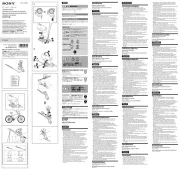
16 September 2025
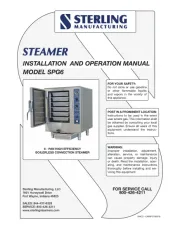
16 September 2025

16 September 2025
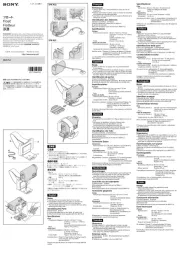
16 September 2025

16 September 2025
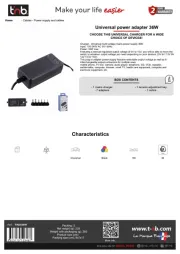
16 September 2025

16 September 2025
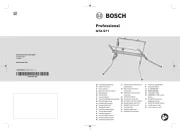
16 September 2025
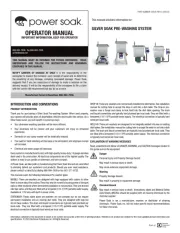
16 September 2025
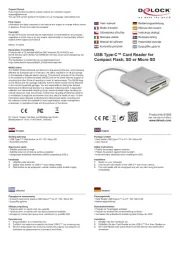
16 September 2025